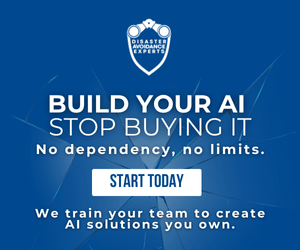New technologies like AI are putting pressure on Asian executives to adapt — and many are feeling the strain.
In some Asia-Pacific markets like India and Australia, the proportion of executives who report an increasing pace of change at work is hovering around 80%.
“There is a feeling in the economy that the pace of change is speeding up,” says Dan Shapero, LinkedIn’s chief operating officer.
Shapero notes that 64% of professionals globally report feeling overwhelmed by how quickly their jobs are changing. In India, one of the platform’s most important Asian markets, that number reaches as high as 82%. And those who are overwhelmed risk being left behind.
“The early adopters of AI are starting to outperform companies that have been slower,” he warns. “That’s only going to heighten over the next year or two as … companies that have been slow to pilot AI technology see themselves being distanced by the companies that have been out in the forefront.”
Bullish on India
LinkedIn has over 300 million users in the Asia-Pacific region, out of a total of 1.2 billion, and the region accounts for an increasingly larger part of LinkedIn’s business.
In particular, Shapero sees “tremendous growth and tremendous opportunity” in India, outside the country’s major cities, like Mumbai, Bangalore, and Delhi, into smaller urban areas.
“The more that LinkedIn becomes not just a platform for employees of multinationals, but local companies as well, the more successful we will be,” he says.
The issue of being left behind by technological charge is especially intense in India, which is set to add 33.9 million new jobs — 2.73 million of which will be in tech — by 2028, according to research from ServiceNow and Pearson released in November.
Yet Indian business leaders worry that the country is not producing enough tech graduates to meet the country’s demand for skilled labor.
In July, a senior executive at the National Association of Software and Service Companies estimated that the country’s tech companies might need to reskill over half its workforce in new skills for AI, big data, and cybersecurity.
Changing skills
Employers were always going to start looking for new skills, regardless of AI. According to LinkedIn, one-tenth of today’s jobs have titles that didn’t exist in 2000 — think sustainability officers, data scientists, social media managers, and so on.
Generative AI is just the latest in a long line of new technologies that are changing what skills are needed for the workplace.
In the Asia-Pacific region, LinkedIn estimates that, without generative AI, just over half of those skills will change by 2030; with generative AI, that number increases to 70%.
Potential employees need to start highlighting that “they are comfortable with AI tools,” Shapero argues.
“Companies are starting to put a premium on AI fluency,” he says. “Having a team full of people that find AI as an opportunity is really valuable.”
In late October, LinkedIn released an AI agent to help with hiring and recruiting. “Hiring Assistant” is designed to help recruiters build a pipeline of candidates, manage interview schedules, and draft outreach, among other tasks.
“We see a world where AI will allow people like recruiters to focus on the human parts of their job,” Shapero says. “The modern recruiter will need to be AI fluent, and need to be exceptional at human skills like communication, persuasion, negotiation, collaboration, curiosity, and creativity.”
LinkedIn’s COO has a suggestion for companies trying to find people who’ll perform best in the world of AI: Just ask them directly. “One of the most powerful interview questions today is, ‘Tell me about a time when you used AI to get your work done,’” he says.
Written by Nicholas Gordon for Fortune as “Work trends like AI are forcing Asian professionals to adapt, and fast: ‘The pace of change is speeding up’” and republished with permission.


 Dr. Gleb Tsipursky – The Office Whisperer
Dr. Gleb Tsipursky – The Office Whisperer Nirit Cohen – WorkFutures
Nirit Cohen – WorkFutures Angela Howard – Culture Expert
Angela Howard – Culture Expert Drew Jones – Design & Innovation
Drew Jones – Design & Innovation Jonathan Price – CRE & Flex Expert
Jonathan Price – CRE & Flex Expert













